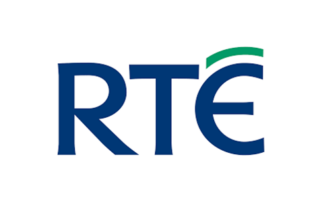Photovoltaic solar panels are becoming more widespread across Ireland – not only for homeowners but also across the agriculture sector.
Solar panels, which convert the sun’s natural energy into free electricity, are well-suited to modern Irish farms which use machinery which require electricity to function.
Farmers can make huge savings on energy bills and there are grants which offset the upfront cost of installing solar PV for farms in Ireland.
Because of the benefits, which we will outline in more detail below, solar energy in agriculture is becoming increasingly common and financially attractive.

The key takeaways:
Table of Contents
Why Solar Panels are Ideal for Irish Farms
Solar energy can be used to power any farm machinery which requires electricity to function. How much money farmers spend on electricity depends on the size of their farm.
Smaller farms typically have higher overheads, however for dairy farms that bring in over €8,000 per year, they can spend around 50 cent on energy per litre of milk, and €5.40 per pig for pig farms.

Data shows that the average dairy farm in Ireland has 90 cows, so we can estimate that dairy farmers spend over €2,200 per year on electricity, much of which goes towards heating water, vacuum pumping and milk cooling. However, some dairy farmers in Ireland pay as little as 23 cent per litre of milk produced, while others pay as much as 76 cent per litre.
Despite these disparities in how much dairy and other types of farms pay in energy bills in Ireland, the underlying fact is that they could benefit massively from the installation of solar panels by slashing their annual bills.
Solar Farms on Agricultural Land
Agricultural land also has great potential for solar farms. Farmers can install large solar PV systems on land which is not currently being used, or in many cases land which is being used for grazing.
It is more than possible for ground-mounted solar systems to be installed on land used for sheep grazing, and for both land uses to operate together.
How much energy can solar panels produce for farms?
The amount of energy produced by solar panels depends on factors such as the size of the system, their output, and whether the panels are ideally positioned for optimal sunlight exposure.
Farms can be small or large, and the number of solar PV panels that farms can install is naturally limited by the space that they have available.
| Location | Approx. area required | Solar system size | Approx. electricity produced per year |
| Domestic rooftop | 30 square metres | 4kW | 3,300kWh |
| Farm rooftop or south facing field | 200 square metres | 25kW | 20,000kWh |
| Farm rooftop or south facing field | 400 square metres | 50kW | 40,000kWh |
| Solar farm | 5 acres | 1MW | 900,000kWh |
A 30 square metre roof could accommodate a solar system between 4 and 6kW, producing around the annual electricity of an average household.
The solar panels’ electricity generation will be determined by their peak output, as well as factors such as the sunlight received in a given year.
Taking this into account, we can say that 1 kW of solar panels produces around 800kWh of electricity per year, and needs about 7 sq. m of space.
How much can farmers save with solar panels?
The amount of money saved again depends on factors such as efficiency, orientation and the size of the PV system.
For example, if your farm’s electricity needs at a certain time were 30kW and your solar panels were producing 7.5kW, your net import from the grid would be 22.5kW (30kW minus 7.5kW).
Essentially, each unit of electricity not imported from the grid equals savings on energy bills. In the above example, if you were buying energy at 20c per kWh, and you generate 7,500kWh through solar panels, you’d save €1,500.
If your solar panels generate more electricity than you use, then it can be stored in battery for later use (which also protects farms against blackouts), or sold back to the grid for some additional savings.

Benefits of Solar PV on a Farm
There are a number of benefits of having a solar PV installation on land in the agricultural sector.

Solar Panels Grants for Farms in Ireland
Grants available to farmers in Ireland for solar panels include the SEAI’s Non-Domestic Microgen Grant (NDMG) and the updated TAMS 3 grant. The SEAI grant offers up to €162,600 for solar panels installation, while TAMS 3 provides 60% of installation costs up to €90,000.

Non-domestic Microgen Grant for Farms
SEAI non-domestic grants are designed to help with the initial costs of installing a solar PV system. The amount offered depends on the maximum output of the solar array, capped at 1,000kWp. A solar PV system with an output of a maximum 1000kWp can be grant funded through the scheme, and would receive the maximum grant aid of €162,600.
TAMS 3 Grant for Farms
The updated TAMS 3 grant offers up to 60% of the installation costs of a solar PV system. The scheme is open to farmers who have a minimum of 5 hectares of land, and whose land is declared under the Basic Payment Scheme (BPS) and the Basic Income Support for Sustainability (BISS).
The TAMS 3 scheme is capped at €90,000 and the maximum size of panels eligible for support is 62kW. Another condition is that the electricity generated by the PV system must be primarily used on the farm and dwelling house.
The TAMS 3 Solar Capital Investment Scheme cannot be used to support solar farms on agricultural land whose primary purpose is to export electricity.
Applicants who wish to apply for the SEAI grant and TAMS support, the TAMS 3 solar unit must be an isolated and distinct system to qualify for the grant.
Planning Permission for Solar on Farms
In Ireland, Solar PV panels on the rooftops of farm sheds up to 300kW do not require planning permission in the vast majority of cases. Ground mounted systems of up to 17kW are also exempt from needing planning permission.
For farms located in solar safeguarding zones, near to airports, aerodromes, helipads, and emergency and military facilities, there is a restriction of 300 square metres for the planning exemption to apply.

Learn How to Get Solar Panels for your Farm Today
If you wish to avail of a free quote and to find out more about solar panels for your farm, don’t hesitate to contact us!










